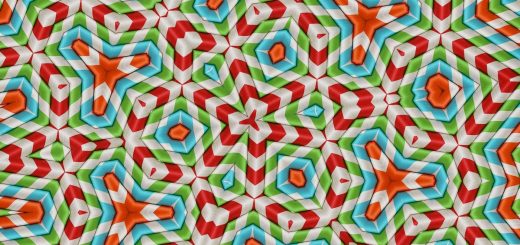7 DIY Tips to Refinish Your Hardwood Floors

Before diving in, please note: This post is for informational purposes only. If you’d like to know more about how we approach topics, feel free to check out our friendly Disclaimer Page.
Hey there, amazing readers! 🖐️ Just a quick note: yes, we know there are a lot of ads here. Trust us, we get it—it’s not the prettiest look, but they help us keep this blog alive and kicking. Those pesky little ads cover the costs of all the behind-the-scenes magic, from hosting and tech stuff to creating content we hope you’ll love.
We’re committed to delivering quality posts, and your support (even just sticking around despite the ads) means everything to us. So, bear with us, and thanks for helping us keep the good vibes rolling. Now, on to the fun stuff! 😉
TRANSLATE BUTTON AT THE END OF THE ARTICLE
A Quick Overview
Refinishing hardwood floors can feel like an overwhelming task at first.
But with the right guidance and a sprinkle of effort, it becomes a rewarding DIY project that can breathe new life into your home.
Imagine transforming dull, scratched, or worn-out floors into stunning surfaces that shine underfoot.
In this article, I’m excited to share seven helpful tips that will lead you through the refinishing process, ensuring that your hardwood floors look as good as new.
Let’s dive in!
Gather Your Supplies: What You’ll Need for Success
Before diving into the refinishing project, I found that gathering all necessary supplies is a game-changer.
It saves time and reduces frustration.
Here’s a list of essential tools and materials you’ll need:
Flooring Sander: A drum sander is ideal for larger areas, while an orbital sander works well for corners and small spaces.
Sandpaper: Get a variety of grits (e.g., 36, 60, 80, and 120) to transition smoothly from rough to fine sanding.
Stain: Choose your desired color.
Wood stains come in a rainbow of shades, so don’t hesitate to get creative!
Finish: Polyurethane is popular for its durability and variety (oil-based or water-based).
Brushes and Rollers: Pick up high-quality brushes and rollers for applying the stain and finish.
Safety Gear: Dust mask, goggles, and knee pads will protect you while working.
Tack Cloth or Vacuum: Essential for cleaning the surface before applying stain or finish.
I recommend assembling all these items in one area to avoid running around looking for tools mid-project.
It’s all about keeping the momentum going!
Assessing Your Floors: Is Refinishing the Right Choice?
Not all hardwood floors need refinishing.
In my experience, assessing the condition of your floors is crucial.
Here are some telltale signs that it’s time to refinish:
Visible Scratches and Dents: If your floors have deep scratches or visible dents, refinishing can help restore their beauty.
Fading or Discoloration: Sunlight can fade wood over time.
If your floors look dull, refinishing can revive their rich tones.
Water Damage: If water has penetrated, causing stains or warping, a refinishing job may be a necessary fix.
Worn Finish: If the finish is wearing off, it’s time to bring back that protective coat.
However, if your floors are significantly damaged or have structural issues, refinishing may not be the answer.
In such cases, replacing the flooring could be a more suitable option.
I once ignored some signs and attempted to refinish, only to find out that a replacement was in order.
Learn from my experience!
Preparing the Area: Clear and Clean for the Task
Preparation is key.
I can’t stress enough how much easier the refinishing process becomes when you start with a clean slate.
Here’s how to prepare your space:
Remove Furniture: Move all furniture out of the room.
It’s a hassle, but you’ll be amazed how much easier it is to work with a clear space.
Remove Baseboards: If possible, take off the baseboards to get right up to the edges of the floor.
Sweep and Clean: I always give the floor a thorough sweep and mop.
You want to eliminate any dust or dirt that could get trapped under the finish.
Check for Nails or Staples: Ensure there are no protruding nails or staples.
These can damage your sander and ruin your finish.
Ventilation: Open windows and doors to keep the air circulating.
This helps with drying and reduces fumes.
Once everything is clear, I like to take a moment to appreciate the bare bones of the space.
It’s like a blank canvas waiting for a beautiful masterpiece!
Sanding Techniques: Get the Perfect Smooth Surface
Now comes the fun part—sanding!
This step is crucial for a smooth, even finish.
The right technique makes all the difference.
Here’s how to sand effectively:
Start with Coarse Grit: Begin with the coarsest grit (like 36) to remove the old finish.
Follow the Grain: Sand in the direction of the wood grain.
Sanding against the grain can cause scratches.
Use a Drum Sander: For large areas, a drum sander is efficient.
Move it slowly to avoid gouging the wood.
Edging and Corners: Use a belt sander or a hand sander for corners and edges.
Don’t skimp on these spots!
Progress Gradually: Move to finer grits (60, 80, and finally 120).
Each step smooths the surface further.
Clean Between Grains: After each sanding step, vacuum and use a tack cloth to remove dust.
Keeping the surface clean is essential for adhesion.
Sanding can be labor-intensive, but it’s also satisfying.
Watching the floor transform right before your eyes is incredibly rewarding!
Choosing the Right Stain: Colors to Brighten Your Home
Staining your hardwood floors is like giving them a fresh coat of paint.
Choosing the right shade can completely alter the room’s atmosphere.
Here are some tips for selecting the perfect stain:
Test Samples: Always test stains on a small, inconspicuous area of the floor.
The lighting in your room can significantly affect the color.
Consider Style: Think about your home’s overall style.
Lighter shades can make a space feel airy and modern, while darker hues add sophistication.
Durability Matters: Water-based stains dry faster and have less odor, while oil-based stains provide deeper penetration but take longer to dry.
Environmentally Friendly Options: Look for low-VOC (volatile organic compounds) stains if air quality is a concern.
Think Long-Term: Will your style change?
Choose a color that you’ll love for years to come.
On my last project, I went with a rich walnut stain.
It transformed my otherwise drab living room into a cozy haven.
The right stain can make all the difference!
Applying Finish: Tips for a Flawless Coat Every Time
Once the stain has dried, it’s time to apply the finish.
This step is where the magic happens.
Here’s how to do it right:
Choose the Right Finish: Polyurethane is a popular choice.
Water-based options dry faster, but oil-based finishes provide a rich look.
Application Tools: Use a high-quality brush or roller.
A good tool will give you a smooth finish.
Thin Coats: Apply thin, even coats.
It’s better to do multiple thin layers than one thick one.
Thick layers can bubble or peel.
Follow the Grain: Just like with sanding, apply the finish in the direction of the wood grain.
Ventilation Again: Keep windows open and fans on for proper airflow during this step.
Drying Time: Allow each coat to dry fully before applying the next one.
I learned the hard way that rushing this step leads to uneven finishes.
Taking my time results in a stunning final product!
Drying Times: Patience is Key for Beautiful Results
Patience is essential in any DIY project, especially when it comes to drying times.
Each finish and stain has its own recommended drying time.
Here’s what to keep in mind:
Follow Manufacturer Instructions: Always check the label for how long the product needs to dry.
Temperature Matters: Warmer temperatures can speed up drying time, while cooler or humid conditions may slow it down.
Avoid Foot Traffic: It’s tempting to test out your newly finished floors, but refrain from walking on them until fully dried!
Cure Time: Remember that while the finish may feel dry to the touch, it often takes several days to cure fully.
I once couldn’t resist walking on my newly finished floor too soon.
Let’s just say I had to do some serious touch-ups afterward.
So, trust me—waiting is worth it!
Repairing Scratches: Small Fixes for Big Impact
After refinishing, you might still notice a few scratches or imperfections.
Fortunately, fixing these small issues is often manageable.
Here’s how:
Wood Filler: Use a wood filler that matches your stain color.
Apply it with a putty knife to fill in scratches.
Sand Smooth: Once dry, sand the area lightly to ensure it’s even with the surrounding surface.
Touch-up Stain: Apply a small amount of stain over the filled area to blend it in seamlessly.
Finish Again: If necessary, apply a thin coat of finish over the touched-up area to keep it protected.
I had a few scratches after my last project and was amazed at how a little wood filler and stain could make them disappear.
Small fixes can have a big impact!
Maintaining Your Floors: Keep Them Looking Great
After all that hard work, you’ll want to maintain your newly refinished floors.
Here are some handy tips to ensure they stay in top shape:
Regular Sweeping: Sweep or vacuum regularly to remove dirt and debris that can scratch the finish.
Avoid Water: Water is a wood floor’s enemy; mop with a damp cloth instead of soaking the floor.
Use Area Rugs: Place rugs in high-traffic areas to protect the finish from wear and tear.
Avoid Harsh Cleaners: Stick to cleaners designed specifically for hardwood floors.
Avoid abrasive or ammonia-based products.
Be Cautious with Furniture: Use felt pads under furniture legs to prevent scratches when moving items.
On a personal note, I’ve learned that investing a little time in maintenance saves a lot of effort in repairs later on.
A little care goes a long way!
Tools of the Trade: Must-Have Equipment for Refinishing
Every DIY enthusiast knows that having the right tools makes a world of difference.
Here’s a rundown of must-have equipment for refinishing your hardwood floors:
Sander: A good-quality sander makes all the difference in achieving a smooth finish.
Vacuum: Essential for cleaning up dust between sanding and finishing.
Brushes and Rollers: Invest in high-quality tools for applying stains and finishes.
Measuring Tools: A tape measure for accurate measurements ensures no surprises along the way.
Buckets: For carrying your stains and finishes.
It keeps everything organized!
Having the right tools not only improves efficiency but also makes the process more enjoyable.
I’ve often found that investing in quality tools pays off in the long run!
Safety First: Protect Yourself While You Work
Safety should be your number one priority while working on your floors.
Here are some essential safety tips:
Dust Mask: Protect your lungs from dust and fumes by wearing a dust mask or respirator.
Goggles: Keep dust and debris out of your eyes with a pair of safety goggles.
Knee Pads: Protect your knees while sanding or applying finishes.
Ventilation: Always ensure good airflow in the room.
Open windows and use fans to disperse fumes.
I can’t tell you how many times I’ve been grateful for my safety gear.
It makes a messy job feel a little less daunting!
Celebrate Your Success: Enjoy Your Beautiful Floors!
Once you’ve completed the refinishing process, it’s time to enjoy your hard work!
Take a step back and admire your stunning floors.
Here are a few ways to celebrate:
Host a Gathering: Invite friends or family over to show off your newly refinished space!
Create a Cozy Corner: Set up a reading nook or a quiet place to enjoy the beauty of your floors.
Take Photos: Capture the transformation and share your success on social media.
You deserve the recognition!
Refinishing my hardwood floors was one of the most rewarding DIY projects I’ve done.
Not only did I enhance my home’s aesthetics, but I also gained a sense of accomplishment that can’t be bought.
I hope these tips inspire you to tackle your refinishing project with enthusiasm!
Conclusion
Refinishing hardwood floors is an achievable DIY project that can transform your living space.
By following these tips—from gathering supplies to celebrating your success—you’ll be well on your way to creating beautiful floors that you can be proud of.
Remember, the process may take time, but the results will be worth every ounce of effort.
Embrace the journey, enjoy your beautiful floors, and don’t forget to share your success with friends and family!

The Enlightenment Journey is a remarkable collection of writings authored by a distinguished group of experts in the fields of spirituality, new age, and esoteric knowledge.
This anthology features a diverse assembly of well-experienced authors who bring their profound insights and credible perspectives to the forefront.
Each contributor possesses a wealth of knowledge and wisdom, making them authorities in their respective domains.
Together, they offer readers a transformative journey into the realms of spiritual growth, self-discovery, and esoteric enlightenment.
The Enlightenment Journey is a testament to the collective expertise of these luminaries, providing readers with a rich tapestry of ideas and information to illuminate their spiritual path.
Our Diverse Expertise 🌟
While our primary focus is on spirituality and esotericism, we are equally passionate about exploring a wide range of other topics and niches 🌍📚. Our experienced team is dedicated to delivering high-quality, informative content across various subjects ✨.
To ensure we provide the most accurate and valuable insights, we collaborate with trusted experts in their respective domains 🧑🏫👩🏫. This allows us to offer well-rounded perspectives and knowledge to our readers.
Our blog originally focused on spirituality and metaphysics, but we’ve since expanded to cover a wide range of niches. Don’t worry—we continue to publish a lot of articles on spirituality! Frequently visit our blog to explore our diverse content and stay tuned for more insightful reads.





